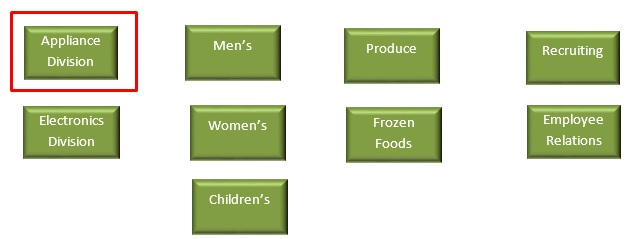When you study martial arts there are many precise movements that work together to produce a powerful motion to protect one’s self. In order to understand that powerful motion you must first understand the parts the motion is made up of. There are many different punches, strikes, kicks, angles, pressure points, and more that play into that powerful motion. In order to understand the effect, you have to understand how that effect is built. This concept is no different to approaching identifying processes in your organization.
I have had the opportunity for 15 years to be a part of organizations where process modeling is a tool leveraged to explain the complex, and break it down to simple. However, process modeling/mapping/flowing, can be an art, and science, based on the maturity of the organization, knowledge of those doing this work in the organization, and many other factors. What I have found can be challenging is identifying the actual processes to model/map/flow. The fight identification may not occur on the first attempt as this work can be quite iterative, however, there are some concepts that can help make the identification a little easier:
1. Organizational Set Up: Take time to understand how the organization is organized and how the different pieces of the organization it together. You can determine this information by analyzing an organizational chart, or other organization information. You may not uncover every single department. During process modeling a role/organization may be discovered, as you don’t know what you don’t know in some instances. This may sound crazy, but I’ve experienced some unconventional things in my career to say the least. At least if you take the time upfront to understand the organizational set up you will have some great knowledge. We all know knowledge is power and can really unlock some keys in understanding, and piecing the puzzle together.
2. Clear terminology: Everyone in the organization has to agree on common terminology. You may say, “That’s common sense Paula!!!” One would think so, but it’s amazing to me when you just simply ask, “what is the definition of a process?” you get many different answers depending on who you are talking to. For example, some real life answers I have received are as follows:
A process is a flow of activities broken down into different levels. For example, level 1, level 2, level 3, level 4. I really don’t understand what the levels mean, but that is what I was told.
A process is a sequence of actions taken to achieve a particular goal.
A process are tasks you do in a procedure.
You may find that your first problem is those who are involved in the process work do not even understand the work they have been asked to take a part in, or lead. Nor understand how to accomplish the task. Many organizations know they need process documentation, but do not have the budget to hire the resources needed who have the knowledge, or have the resources internally, to complete the work successfully. It’s EXTREMELY important everyone understands the terminology being used and the definition of that terminology. Yes, there are process standards out there in the industry, but let’s be honest, every organization is different and may use ALL, SOME, or NONE of the standards (yes, some organizations just make up their own standards and rules). It’s important everyone is on the same foundation and playing field so to speak.
3. Education: Once you understand the organization, and the terminology, please ensure there is education to ensure all necessary stakeholders understand it as well. Everyone needs to be working from the same foundation. In martial arts, we all work from the same foundation. There are different types of martial arts, but each has a foundation. Your foundation has to be strong in order to build upon it. The foundation of martial arts is “mental” not physical. If your mental is not right, your physical will be off. The same is with any methodology, or structure, in an organization. If the foundation is not stable, everything you build on it will not be stable either. Spend time ensuring your foundation is strong through knowledge, and understanding first. Then do the work on top of that. If that means you slow down your project by a couple of weeks then by all means, SLOW DOWN. Whether you slow down now, or later, you will have to slow down.
a. Make sure you receive the support, and buy-in needed to be successful. The support needs to come from the top and filter throughout the organization.
b. Make sure you educate on what is in it for each individual in the organization, and how it benefits the organization as a whole. People need to understand the WHY before spending time doing work.
4. Common Approach: It’s best to leverage a common approach to the work, especially if you work in a very large organization. I personally like to use the Functional Decomposition Diagramming concept to identify processes whenever I can. Here are the steps I take to decompose:
a. First, understand the organization as a whole. We discussed the importance prior.
b. Second, focus on an aspect of the organization (this could be one department, line of business line, etc.). Don’t try to understand everything at one time as I come become overwhelming. Understand holistically how the pieces fit but stay focused on a particular portion of the organization if at all possible. This will also depend on how large or small the organization is.
c. Third, ask the question what are the main functions performed in the area of focus.
d. Fourth, for each function break down what processes are conducted at a very high level.
i. Document the process name and process purpose.
ii. Document the process start and ending points.
iii. Document the main activities completed in the process.
e. Fifth, analyze the data to determine if the process is “truly” a process or potentially an activity step opposed to a process.
Let’s look at an example to bring this to light.
Example: ABC Organization (Multi-Faceted Department Store)
Step 1: Understand the organization (Different areas within the department store)

Step 2: Focus on one aspect of the organization to begin decomposition (this may require prioritization – a topic for another article). Under the Home organization there is an Appliance Division and an Electronic Division.

Step 3: What are the main components of the Appliance Division under the Home organization?
I. Selling Appliances
II. Financing Appliances
III. Inventory Management
|
IV. Restocking Appliances
V. Financing
Step 4: What processes are completed for inventory management?
I. Obtain Approval to Order Inventory
II. Order Inventory
III. Validate Inventory Received is Correct
IV. Stock Appliance Inventory
| V. Handle Customer Complaints |
Step 5: Let’s determine if the processes are “true” processes or just “tasks or activities” completed in maybe a larger process by doing some high level definition.
Example Process: Handle Customer Complaints
- Process Definition: This process outlines how customer complaints are handled in the appliance division of ABC Organization. This allows the organization to ensure customer complaints are acknowledged, and handled, as quickly as possible.
- Starts: When a customer calls, or sends in a complaint in writing to the company.
- Ends: When the complaint is resolved.
- Activities completed (at a high level)
- Receive Customer Complaint
- Research Customer Complaint
- Determine Result of Customer Complaint
- Communicate Result of Complaint to Customer
Some of the above processes may be decomposed even further into sub processes if it warrants it, but this particular process is not just an activity, but a process that could be quite involved.
As this is my first iteration of decomposition, I may find that I go back and make changes as I learn more about the processes and organizations. The first time you will probably not get it 100% correct. That is okay. It’s a process in itself to decompose, but decomposition can really help you “Break the Complex Down to Simple”.

|
|
Author: Paula Bell, Business Analyst & CEO
Paula Bell is the CEO of Paula A Bell Consulting, LLC. She is a Business Analyst, Leadership and Career Development coach, consultant, speaker and author with 21+ years of experience in corporate America in project roles to include business analyst, requirements manager, business initiatives manager, business process quality manager, technical writer, project manager, developer, test lead and implementation lead. Paula has experience in a variety of industries to include media, courts, manufacturing and financial. Paula has lead multiple highly-visible multi-million dollar technology and business projects to create solutions to transform businesses as either a consultant, senior business analyst or manager. Currently she is a Business Initiatives Manager leading a revenue team to build capabilities to bring new and innovative products to market.
|
Through her 5-tier consulting business model, Paula helps individuals find their passion, build their brand, and enhance their skill sets through consultations, coaching and customizable documentation. In hopes to empower and motivate others and themselves, through a structured journey of self reflection and awareness as a catalyst for unlimited success.
Paula is originally from Brooklyn, NY. She graduated with a Bachelors of Science in Management Information Systems from Oral Roberts, University located in Tulsa, OK. Paula is currently married and resides in Iowa with her husband and twins (boy/girl). Paula is extremely active in her community as she is the Past President of the Rev. Dr. Martin Luther King Jr. Scholarship Fund which provides scholarships to minorities attending Iowa institutions as well as volunteers for many different community events. Paula also studies and trains martial arts and achieved her 2nd degree black belt designation in August of 2018.